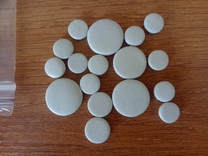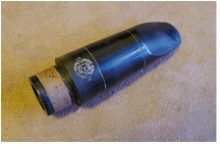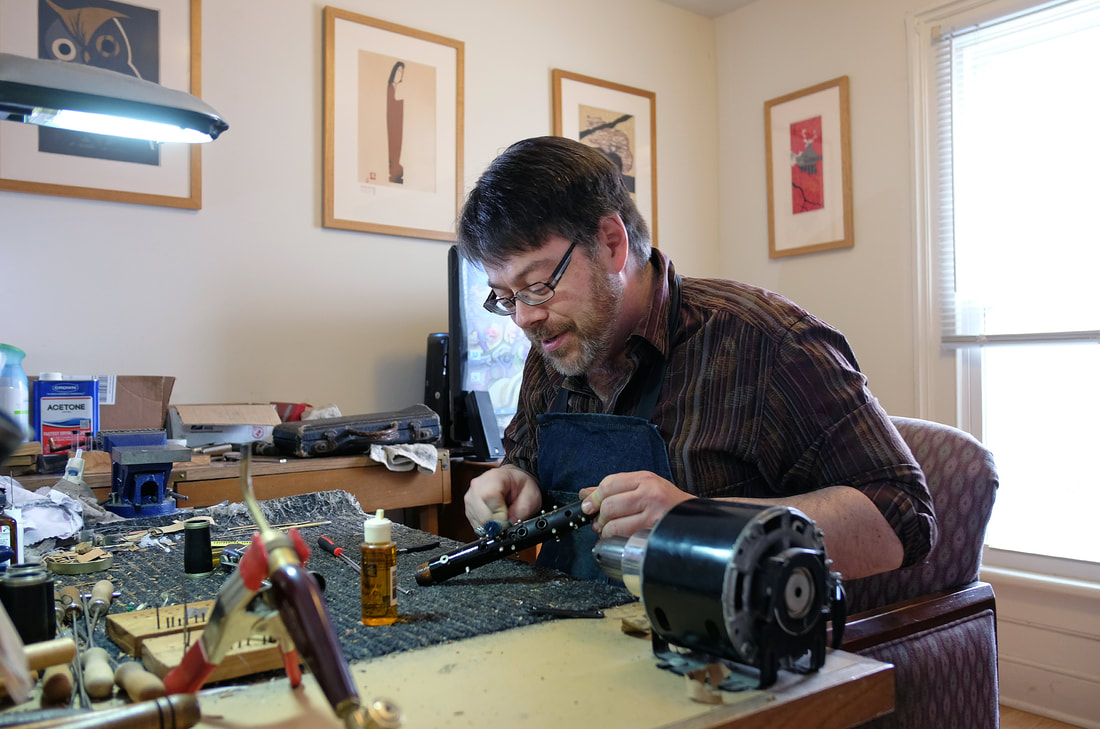 For a few years now, I've been using tan, kidskin pads almost exclusively on my older horns. Folks ask why, from time to time, so I thought I'd take a moment and answer some of the implicit questions: I find that they last longer than bladder and can be oiled occasionally, further extending their useful life. As an experiment, I once oiled pads that had been in an early R-13 for 40 years and, after softening and adjustment, the instrument played fairly well! I find that they take a better impression from aging toneholes. Slight warp-age, small nicks, uneven wear, can all be forgiven by a leather pad, which will take a better seat than the harder double skin felt pads in common use in modern horns. This often saves me having to reface a tonehole made slightly uneven from wear or abuse, which is my preference when possible: the Hippocratic Law for clarinets being "First do no harm". I find that they give closed keys a feeling more consistent with bare fingers on open holes (especially on Albert/ simple system horns) versus hard felt. I am often distracted by the difference in feel between my fingers and hard felt or cork pads; its somewhat uneven. Finally, I find that the tan kidskin shows less wear and discoloration than white bladder, keeping the horn looking fresh longer. I hope that players and other techs will consider these pads and their advantages next time they undertake the overhaul of a vintage instrument of quality!
0 Comments
Recently, in a fit of bravery, I've been purchasing some no-name clarinets, mostly Albert systems. These golden-oldies have gotten harder to find, lately, and the big names are commanding big prices: a $1000 or more for a Buffet in good, un-restored condition, which puts it out of my 'can-risk' range!
I don't buy blind, of course: I look at wood, key-work, and condition and I ask questions. And you would be surprised at some of the nice old horns that I come across! There are a number of reasons: most no-names were made by reputable manufacturers for stores, catalogs and big distributors. If it says 'made in France' and its from the 20's-50's, chances are good that it was a Buffet, Thibouville Freres, Couesnon, Malerne, or SML. If it was 'made in Italy', a Rampone or Orsi. If 'made in Germany', a Gebr. Moennig or one of a host of excellent (if lesser known) makers from Markneukirchen - not a bad pedigree! Also, this was the Era of the Clarinet and a poor make didn't stand much of a chance against the flood of reasonably priced, quality instruments on the market. Compare this to today's spate of First Act, Borg, and other marginal junk instruments - they wouldn't have stood a chance 80 years ago! Even some of the old French and American stencil hard rubber or metal instruments play surprisingly well, with a good overhaul and decent mouthpiece. So, don't be scared of an inexpensive old no-name for personal use. Compare key-work for similarities to known brands (hint: the shape of the lower stack bridge key is a giveaway to at least 3 makers), look for dark wood with a tight grain and pro features (like post lock-downs) and ask Ask ASK questions : are there cracks, ugly repairs, frozen/rusted keys, etc. With practice and a little luck, you can have a fine horn for practically the cost of the overhaul and save another piece of craftsmanship from the junk-pile....  A customer wrote to ask : "What's a good set up for jazz on the clarinet? I've changed my embouchure a lot but I'd like to have the best set up possible also, any advice would be great! Thanks!" I'd like to have the best setup possible, too! So, here's my answer: "Nice to hear from you! Well, that's a tough question...Its very individual. If you look at a list of famous players on any instrument (especially woodwind) the setups tend to be all over the place. Generally speaking, Jazz players use a more open tip and a lighter reed than classical, but a bigger part is having a 'jazz tone' in your head, and adjusting your timing, attack, phrasing, etc. to reflect a Jazz concept. Who do you listen to? Buddy DeFranco? Artie Shaw? Lots of listening and practicing with playalong tracks will help the most... Now that, being said, its harder to get a Jazz sound on Vandoren M13 mpc with #4 reeds - that's a pretty closed, stuffy setup. I've used Bernard Portnoy mouthpieces on my horn and with students and had good results, either the BP02 or more open BP03 facing. These can generally be found on ebay for about $40 used. Also, an older Selmer HS** (2 stars, not one) gives a nice tone and is open enough to give some flexibility. Also, don't forget reeds! I'd try a Fibracell 3.5 synthetic, or, if you really prefer natural reeds, look at a non-classical cut from Alexander: they make some really nice reeds cut specifically for a Jazzy sound." How's that for an answer? |
Archives
February 2024
AuthorThe Licorice Shtick Blog is the creation of the Vintage Clarinet Doctor, a Winston Salem, NC based woodwind instrument repair shop specializing in vintage and antique clarinets, saxophones, and the occasional flute. Categories |

 RSS Feed
RSS Feed